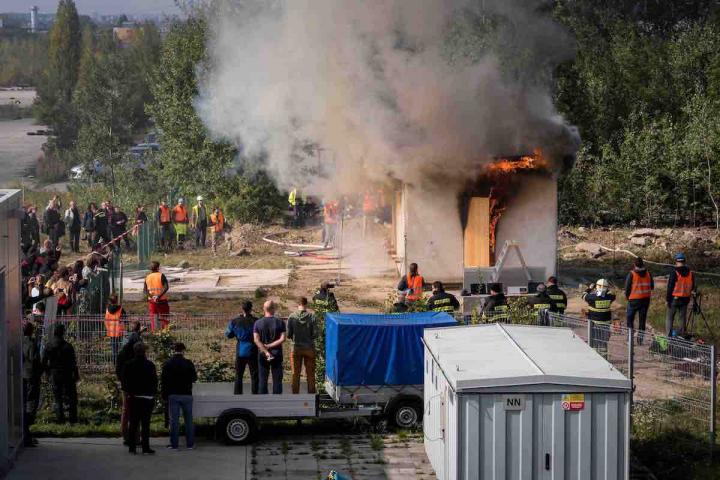
The final experiment, which was carried out in the form of a large-scale fire test, examined the fire properties of the materials and structures used, their behavior when on fire, the distance of the slag structure from other buildings and other parameters. Thermocouples were used to measure temperature of air and material, the radiant heat flux was measured by radiometers and thermocameras. The obtained data will be evaluated during autumn.
The straw building was built at the experimental premises of the University Center of Energy Efficient Buildings, with support of a student grant from the Faculty of Civil Engineering. The building with a 6 x 4 meters floor plan and the students built it in four months. It was a joint cooperation of students from departments of civil engineering constructions, building technology, and steel and wooden structures. Part of the construction took place in the form of workshops for other students from the faculty, for example workshop on the specifics of the technology of application of clay plasters.
In the large-scale fire test, wooden stakes were ignited in the experimental building. During the fire test, the students concentrated on data acquisition, which, when used in numerical simulations, makes it possible to predict the behavior of the straw structure on fire and impact of its behavior on the environment during a fire. The experiment also allowed to monitor the impact of individual plumbing and electrical wall penetrations on how the fire spreads and the overall fire resistance of the building. The alteration of wooden mechanical joints properties during fire was also examined, among other things.